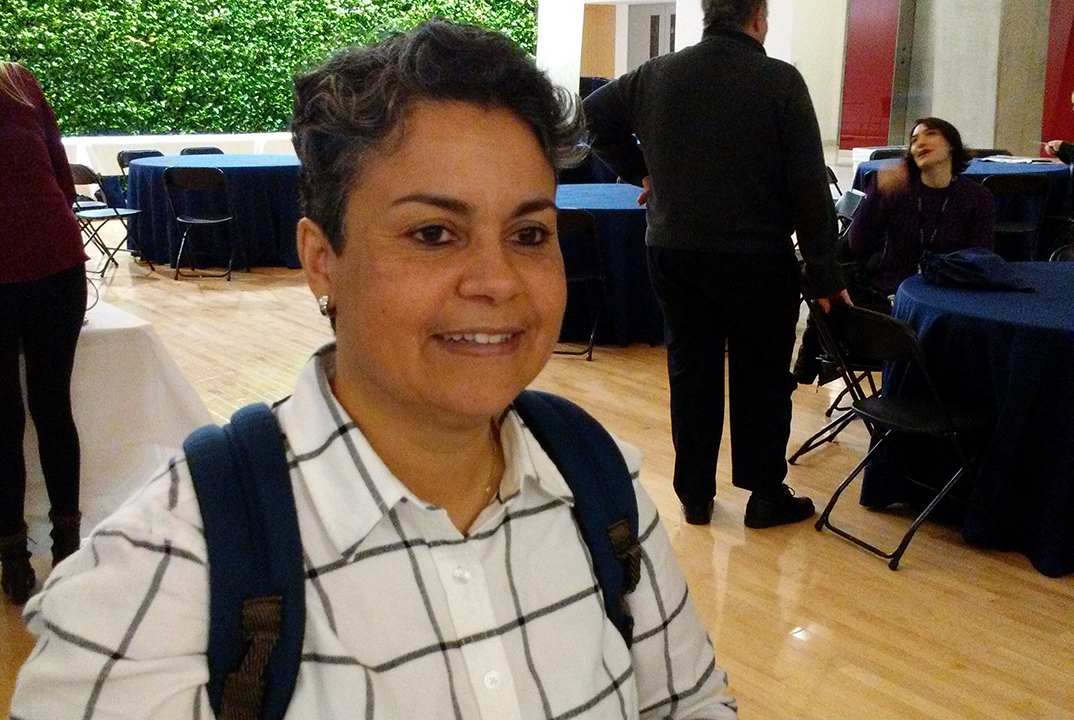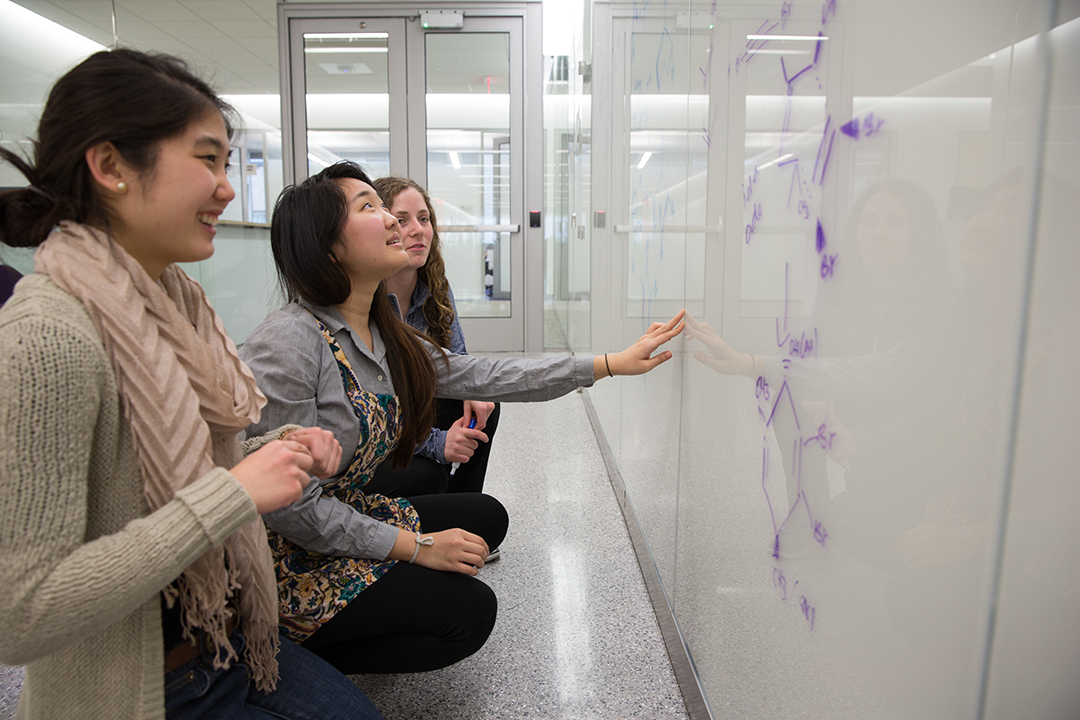By B.L. Wilson
Kawtar Hafidi took a circuitous path to becoming director this year of the physics division at Argonne Laboratory, the United States premier engineering and research center. She started out in Morocco as the daughter of a man who really wanted a boy, completed graduate studies in Paris and landed at the laboratory after a stint as a post doctoral student.
“I came to Argonne as a post doc, full of energy, full of dreams, full of hope,” said Dr. Hafidi.
Dr. Hafidi is an experimental research physicist with Argonne’s Medium Energy Group that studies how fundamental particles such as quarks and gluons form nucleons and nuclei. Clicking through slides, she described the research on the campus outside Chicago where massive accelerators are used to increase energy levels of particles so they can be detected.
She was the keynote speaker at the Conference for Undergraduate Women in Physics hosted by the George Washington University Department of Physics over the weekend. She has written for more than 140 publications and been the recipient of numerous scientific awards, but recounted years of feeling isolated in the Argonne labs that might have stalled her career.
“It was male dominated. They have a strong culture, a tough culture. I was the only woman scientist in that division for 18 years,” she said.
Dr. Hafidi shared with more than a hundred young women from mainly eastern colleges gathered in GW’s Science and Engineering Hall Lehman Auditorium the challenges she overcame in advancing her career.
It’s important to have mentors, but she told them that isn’t enough. She also had many champions. “The fashion for women and minorities is ‘Get a mentor.’ They mentor the hell out of us,” Dr.. Hafidi said. “You need a champion. Someone who will pick up the phone and say, ‘Hey, she’s great. Hire her.’”
She was reluctant when she started out to work with advocacy groups, but realized she wasn’t making much progress on her own and joined Argonne’s Women in Science and Technology.
“You close off yourself, and you say I am doing the best science I can do. It is not sufficient. You have to open your mind. You have to connect,” she said.
She took time away from the physics division, leaving her son and husband for two years to work at the U.S. Department of Energy in Washington, D.C., where she forged new relationships and gained insight into funding research and leadership and the courage to apply for director of the physics division.
“If I never would have come to D.C., it would not have happened. I would have been an angry woman scientist in my corner, waiting. I created my own opportunities,” Dr. Hafidi said. She also advised young women to choose wisely the right partner. Her husband, also a scientist, works in the same division at Argonne, and assumed a larger role in family life in order to support her career.
“The most important part of what I do really is to translate the knowledge to the next generation,” said Dr. Hafidi who keeps track of post doctorate students long after they have worked with her.
Kara Zielinski, a senior biophysics major at GW, said she most appreciated Dr. Hafidi’s honesty in describing what it was like to be an outspoken woman in her field. She said the conference made physics and professionals with doctoral degrees in the field seem approachable.
“Your PhD is another five years away. You have a post-doc, and then maybe you become a professor. Being able to hear their stories makes it all seem real,” Ms. Zielinski said.
GW sophomore Caitlin Carfano, who is majoring in electrical engineering, presented a poster at the conference on research she participated in this summer at the University of Pennsylvania. The research was on bio-photonics, the study of light that is used to improve medical technologies in imaging such as MRIs and CAT scans.
In most of her classes at GW, she said, there are usually only two or three women so the conference was an opportunity to be a part of a community. “Some people, there’s only one girl in their class. It is just nice to know that we have the same kind of day- to-day lives as other people,” Ms. Carfano said.
The conference coordinator, Evangeline Joy Downie, associate professor of physics and an associate dean in the Columbian College of Arts and Sciences, said this was the first time GW had applied to host the conference, which was held just after the department moved into its new facilities in Corcoran Hall.




